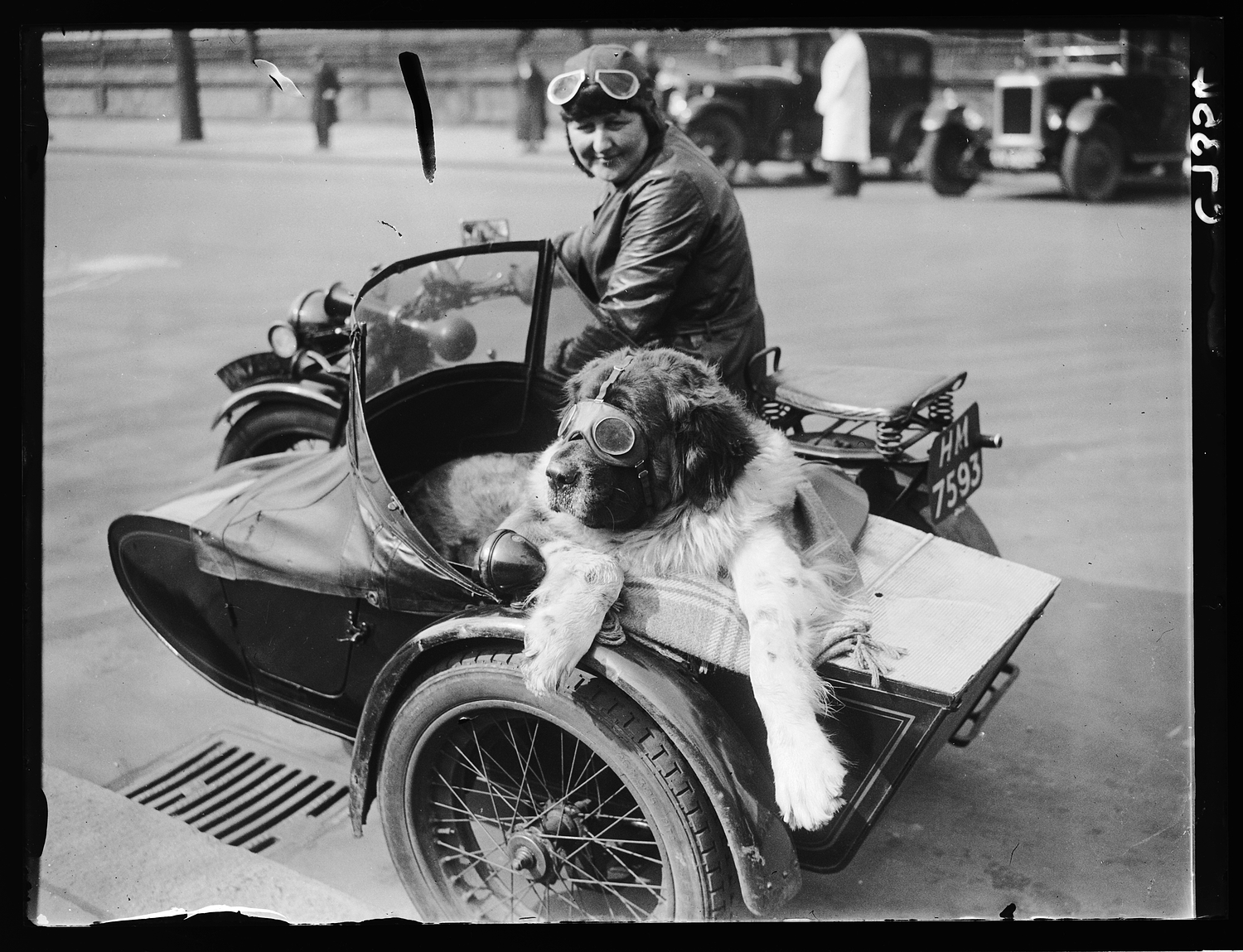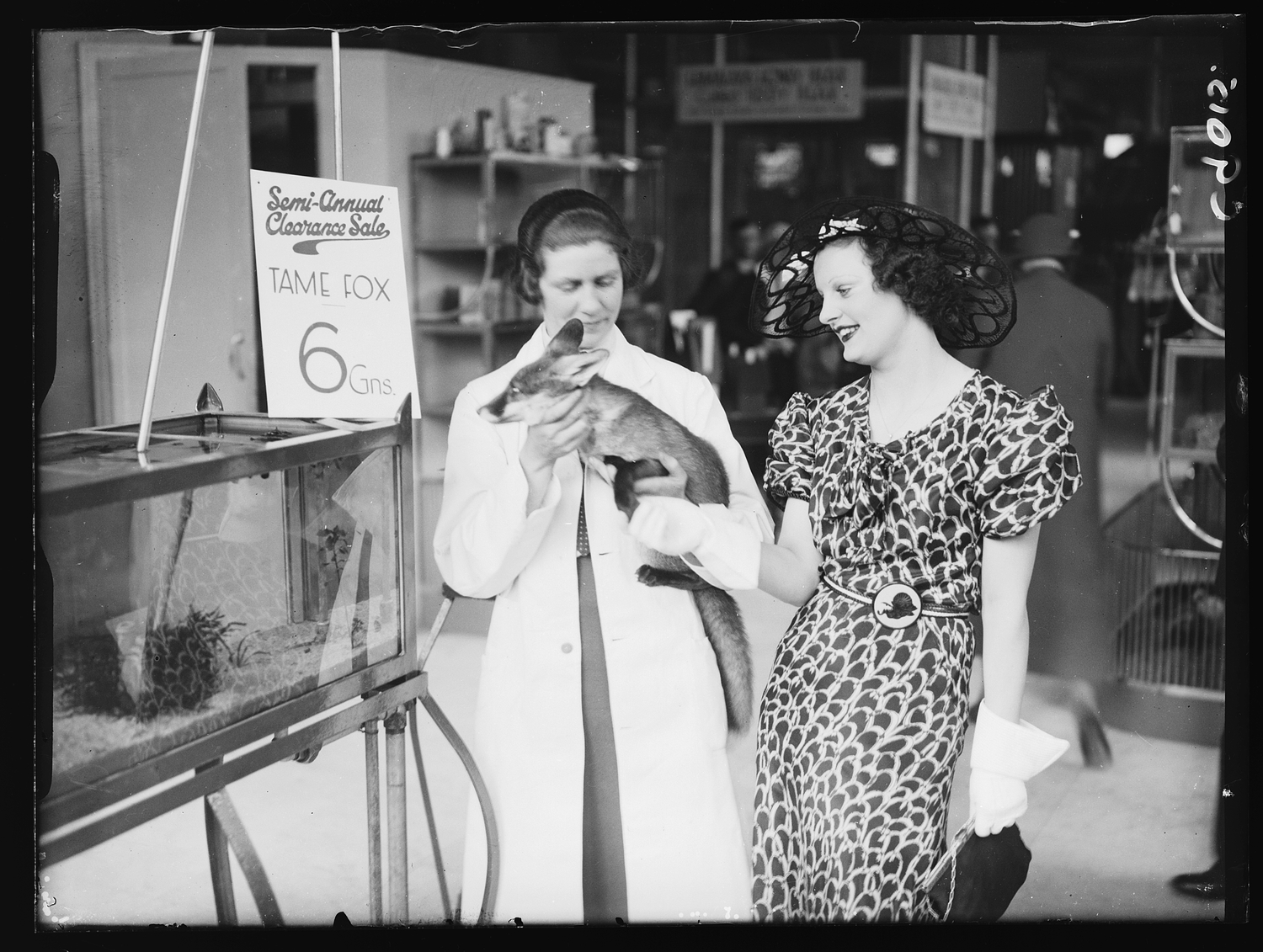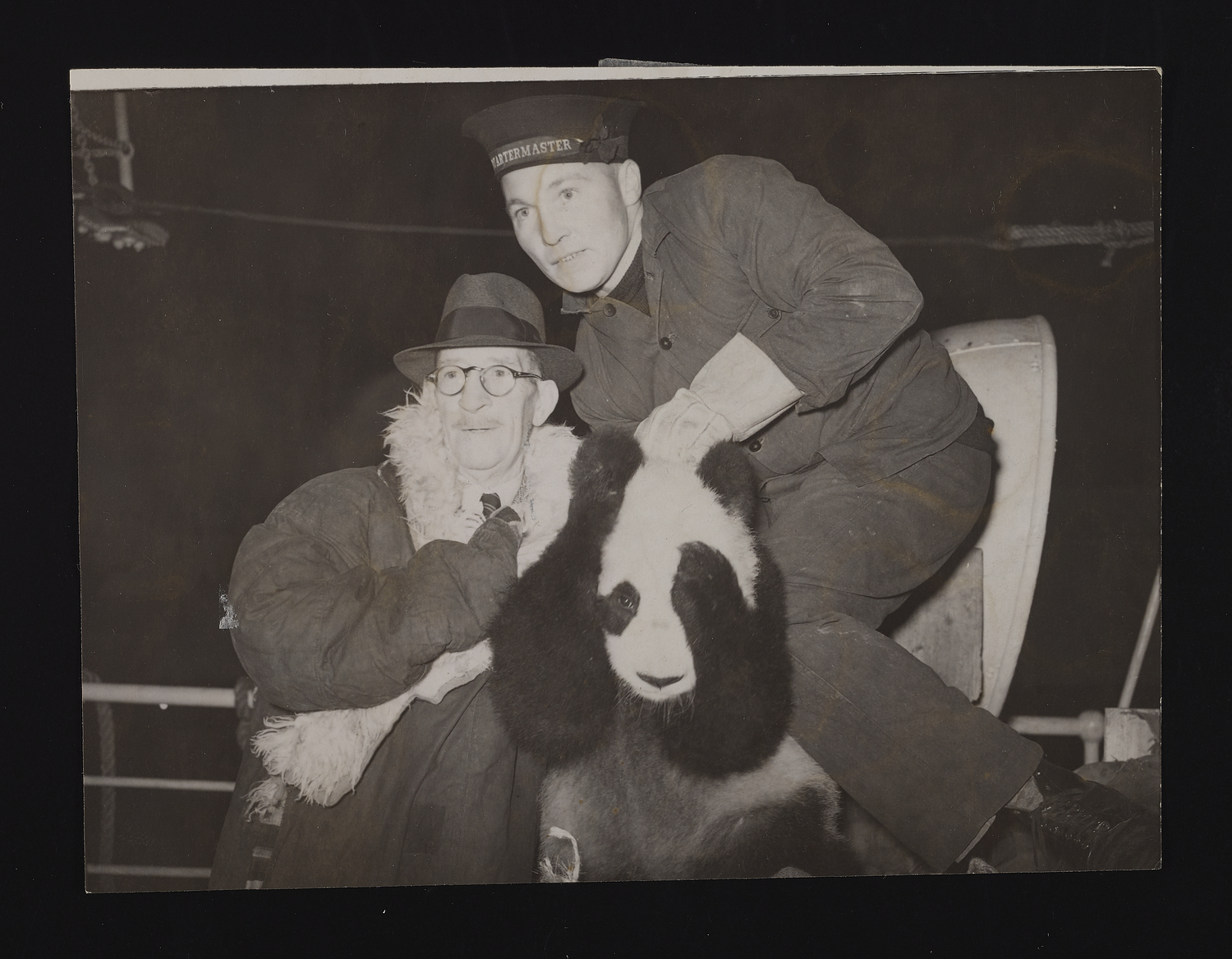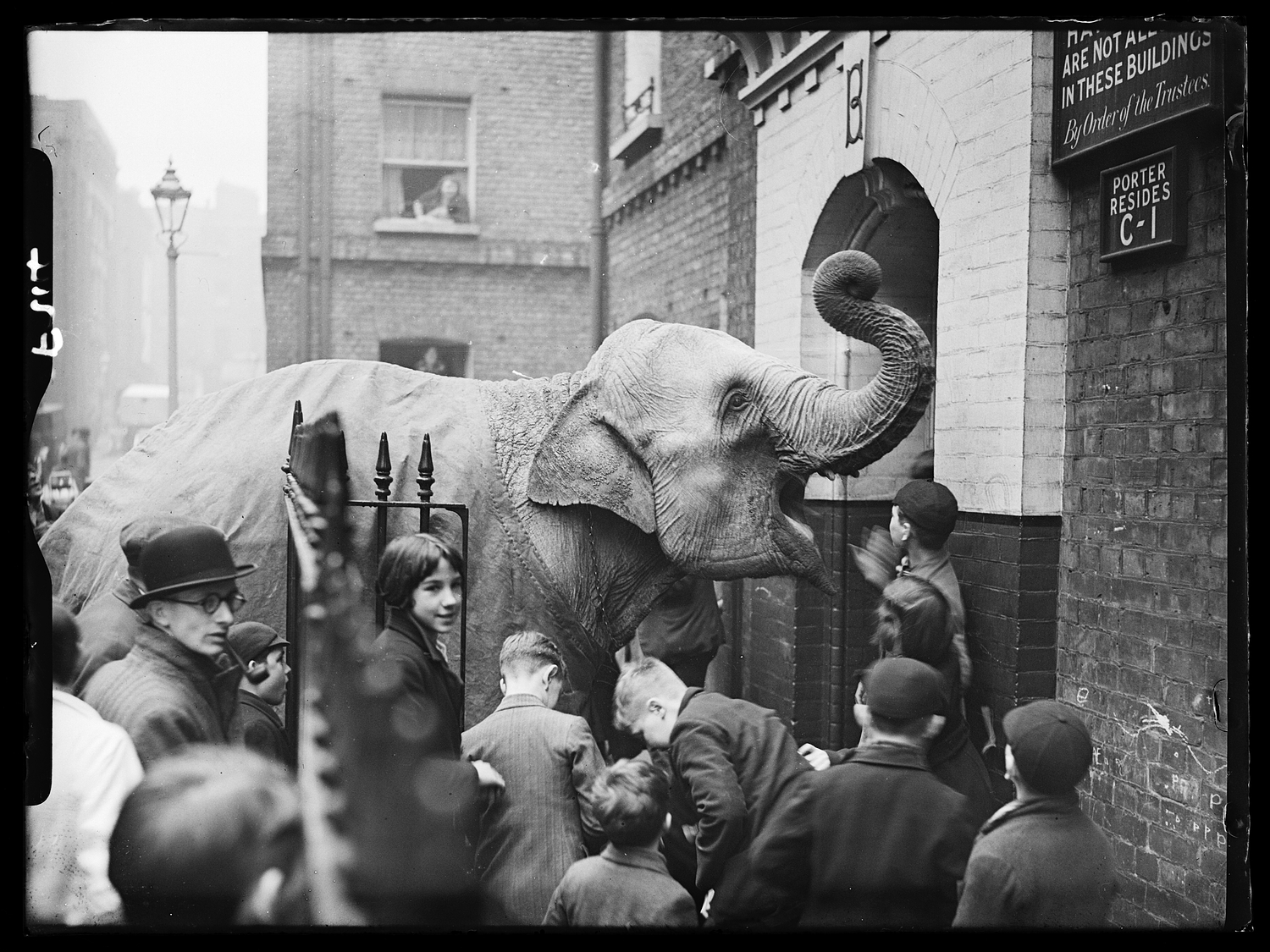Our social media feeds are filled with animals—adorable dogs and cats playing, service animals navigating their way through cities and wild animals recovering from natural disasters. This isn’t a new trend: over its half-century in print (1912–1964) the Daily Herald newspaper captured all kinds of animals on film.
This blog post contains photos of animals that some people may find upsetting. Our negative reaction demonstrates how far animal welfare has come over the decades. Other photos show how we have historically cared for animals or trained them to help people. All the images are snapshots, moments that photographers found controversial, dramatic or exciting.
The cute dogs that are now Instagram fodder also featured in the pages of the Daily Herald newspaper. In 1934, a St. Bernard named Milady Diane had her photo taken. She arrived at the Kensington Championship dog show in the sidecar of a motorbike driven by Mrs Stanborough. Milady Diane wore her own pair of goggles to protect her eyes during the journey which were carefully tied to her head by her owner.

Another potential pet you could buy in 1934 was a ‘tame fox’. They were sold for six guineas in Selfridges department store and would cost you around £60 in today’s money. This fox was kept in a small, glass cage. Today, animal welfare charities discourage people from keeping foxes as pets as they are naturally wild animals and should not be removed from their natural habitat.

Syndication International / Science Museum Group Collection
If pets were photographed because they were cute, then wild animals were photographed because they were rare and ‘exotic’. This photo, taken in December 1938, shows a one-year-old giant panda called Baby. Baby was one of five pandas that arrived that year and were, according to the Daily Herald, the first pandas to be brought to Europe. They were sent to live at London Zoo. However, while China now sends pandas as a form of ‘panda diplomacy’ to strengthen relationships with other countries, Baby was a wild panda captured in China by Major Floyd Tangier-Smith. Baby is clearly distressed in the image, hiding their face from the camera’s bright flash.

Captured wild animals were also used in the circus. The Lupino family, who had been circus performers for generations, performed at the Coliseum Theatre in London in 1938. Their act featured an elephant named ‘Rosie’, who can be seen in the photo surrounded by adoring children. The use of wild animals in circuses has a long history and was only banned in 2020. The RSPCA says that ‘the constant travelling, the cramped transport, the small temporary housing, forced training and performance’ all have negative impacts on the animals’ welfare.

Happily, we had a kinder relationship with some animals. This photo shows a guide dog being trained in 1942. The original caption explains that “‘Phantom’ halts his master at the approach of a car. The dog will only move forward when the way is clear.” Guide dogs, as we know them today, were first trained in World War I and The Guide Dogs for the Blind Association was created in 1934. Guides dogs were especially vital in World War II, when visibility was reduced during the blackout, and Blitz rubble and sandbags lined the streets.

Animals weren’t only photographed; they also made their way onto TV. In 1962, the first Blue Peter pet appeared on TV screens to teach children about animal welfare. The original caption in the Daily Herald read “Petra sits down and starts to reply to his mountain of fan mail… some human announcer has told the children that they can write in for a photograph of him… He has received no less than 60,000 applications – and still no secretary – so poor Petra is just having to sit down and write all the replies himself.” These ‘celebrity’ animals set the scene for the animals that go viral online today.

We might be shocked by photos of tame foxes, captured pandas and circus elephants, but these images remind us how attitudes towards animal welfare have changed. Other images of pampered pooches, loyal guide dogs and cherished celebrity pets remind us that throughout history we have cared for animals, and they have cared for us. As the climate crisis deepens, we must continue to care for all animals on our planet. If we don’t, photographs in the archives will be all that’s left.
